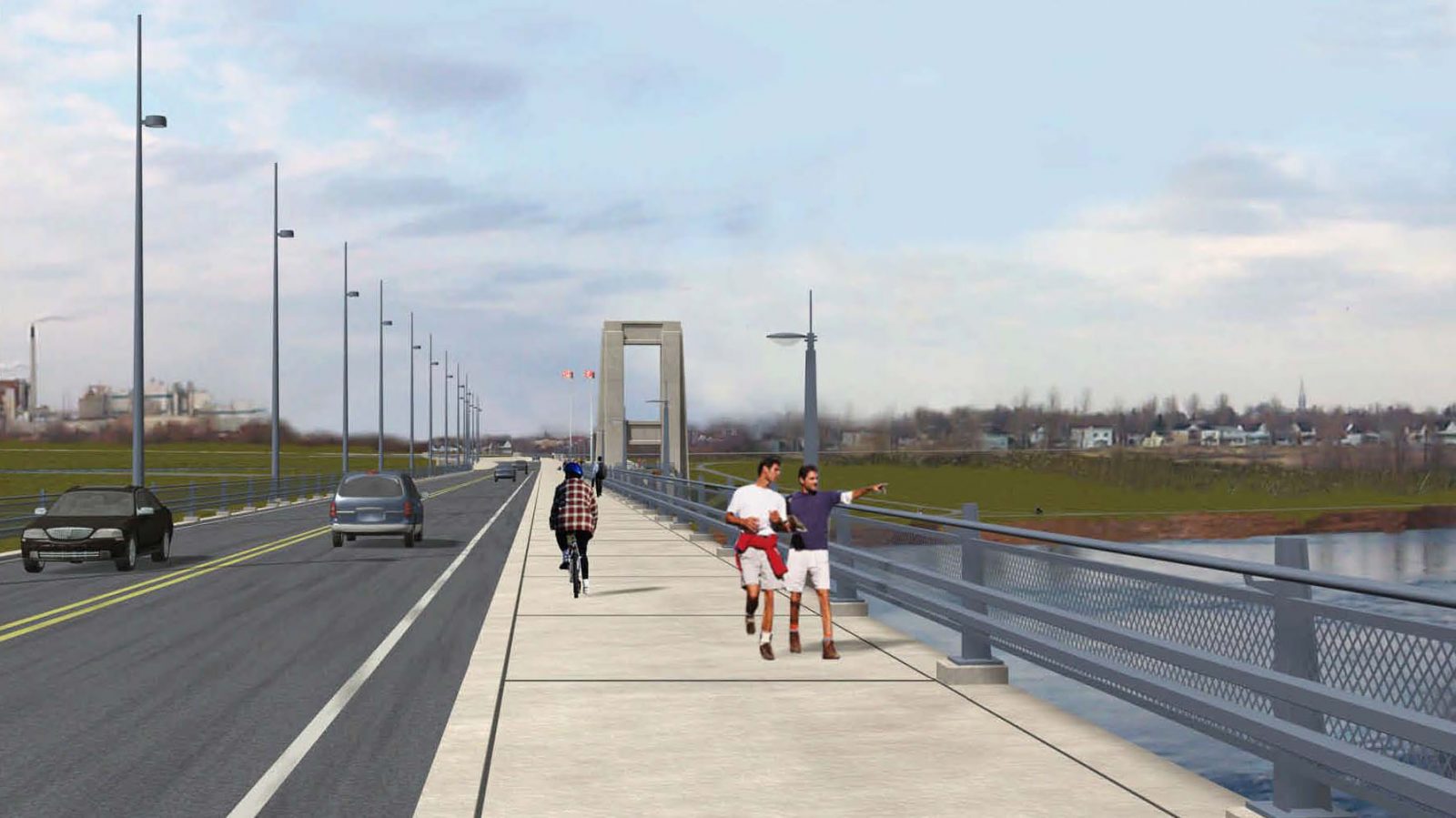By Adam Brazeau
CORNWALL, Ontario – The snow hasn’t even melted off the new low-level North Channel Bridge in Cornwall, and already a major cycling tour is anticipating the ride.
The Great Waterfront Trail Adventure (GWTA), an annual five-day journey through 41 communities along Lake Ontario and the St. Lawrence River, has been rolling into the Seaway City since its inaugural year in 2008.
Marlaine Koehler, executive director of the Waterfront Regeneration Trust, says the spacious sidewalk /cycling path on the new bridge is leading edge infrastructure. She has even contacted the bridge corporation behind the Windsor-Detroit Bridge, which is currently on hold due to funding delays, in hopes they’ll follow Cornwall’s lead.
“This is very exciting. It shows a big change in attitude from bridge corporations,” said Koehler. “I’ve never seen an international crossing that’s so cyclist and active-transportation friendly.”
She has spectacular plans for when the 2014 GWTA wraps up in Cornwall on Aug. 15. Having nearly 200 cyclists crossing the bridge is one of them. She noted that the American cycling market is worth $47 billion annually.
“This is a major international connection. Cornwall should really be celebrating that it is a gateway to that kind of cycling tourism.”
Hendrik Saaltink, general manager of the Seaway International Bridge Corporation (SIBC), felt the high-level bridge didn’t capitalize on the picturesque waterfront or accessibility to Akwesasne and the United States.
The avid cyclist never actually rode his bike on the original North Channel Bridge, although he saw many travellers take the daring ride on a tiny safety curb. Now, like many others, he is anxiously waiting to pedal across the border.
“There are not very many bridges you’ll see with this kind of accommodation for pedestrians and cyclists,” said Saaltink. “It was something we really worked hard at for the community. Not just for quick travel across the structure, but to link it into our parks and recreation.”
Koehler described the bike paths in Cornwall as a “Cadillac” in contrast to others in the province and a popular part of the GWTA.
When SIBC and the Federal Bridge Corporation (FBC) did their environmental assessment before constructing the new bridge, integrating the structure with walking and cyclist trails right across to Akwesasne was a priority.
Saaltink’s goal is to over time extend the pathway down to the SIBC’s operating corridor (located at 200 Akwesasne International Road). He expects that will happen this spring.
“Because we are working with a temporary access road, the bridge approach on Cornwall Island doesn’t connect very well yet,” he said.
Saaltink stressed that the new bridge will also help link both communities on opposite sides of the river.
But the Mohawk Council of Akwesasne (MCA) is waiting for numerous concerns and issues to be addressed by the FBC, SIBC, and the Canada Border Services Agency (CBSA) before they stamp their sign of approval.
MCA said in a media statement issued in late January when the bridge officially opened that the first issue, and a major one for many Akwesasne residents, is the failure by CBSA to accommodate council’s need for an alternative reporting mechanism on Kawehno:ke (Akwesasne).
Saaltink still believes the bridge will one day act as an equalizer. But for now he’s making sure visitors like Koehler continue to trumpet the advancements made to enhance the experience of crossing it.
“It’s going to be very popular for people to go out and look at the river from the bridge,” he said. “I think people will access it from both sides.”



